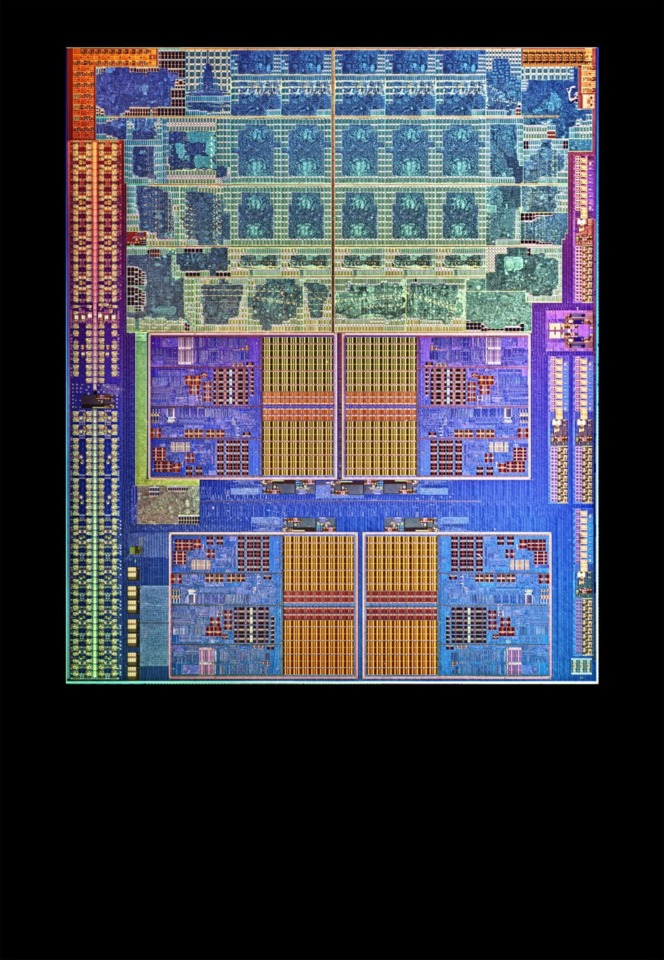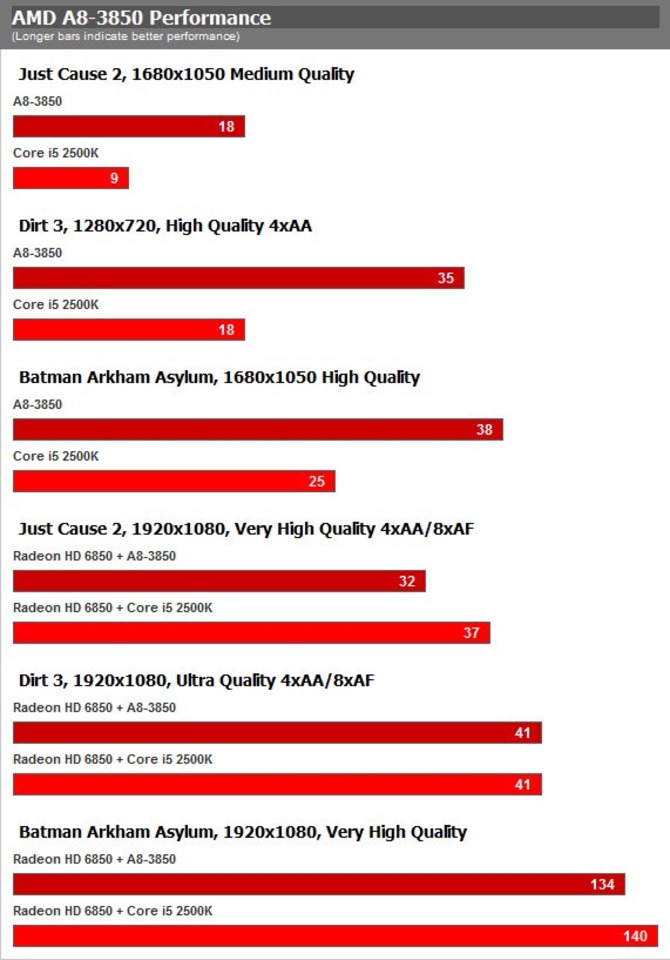The Battle for Budget Graphics: AMD Lynx vs. Intel Sandy Bridge
Intel and AMD duke it out at the bottom to see who's the king of onboard graphics.
Mentioning the term "onboard graphics" to a gamer is like yelling four-letter words in holy places. You're free to do both, but the results are less than optimal. Until recently, onboard graphics were useful for games like Scrabble or perhaps Solitaire, if you really wanted to push the envelope. Intel's Sandy Bridge processor changed that a bit by pairing the beefy Core i3/i5/i7 processors with Intel HD 3000 and HD 2000 graphics. The result allowed you to turn on quite a few newer games and actually play older titles. Crysis was still a stretch, but Counter-Strike is rather doable. AMD is also hopping onto the let's-make-our-onboard-graphics-worth-looking-at bandwagon, albeit half a year later. The company recently released Brazos, meant for laptops, and is now following up with Lynx, AMD's newest desktop offering.

Lynx-based chips are essentially quad-core Phenom II X4 processors that have had a few changes made to them and have been paired with more than a few Radeon cores. The changes are enough to warrant an entirely new socket. Lynx chips will use motherboards with FM1 sockets and A55/A75 chipsets. The company will release four Lynx-based desktop parts: A8-3850, A8-3800, A6-3650, A6-3600. The A8-3850 will cost $135, while the A6-3650 will be $115. AMD doesn't have pricing for the other two, but we're going to guess it's up and down by a handful of bucks. The two with pricing will be available on July 3.
A8-3850
2.9GHz Quad-Core
Radeon HD 6550D GPU
100W TDP
4MB L2 Cache
A8-3800
2.4GHz Quad-Core (2.7GHz Turbo)
Radeon HD 6550D GPU
100W TDP
4MB L2 Cache
A6-3650
2.6GHz Quad-Core
Radeon HD 6530D GPU
65W TDP
4MB L2 Cache
A6-3600
2.1GHz Quad-Core (2.4GHz Turbo)
Radeon HD 6530D GPU
65W TDP
4MB L2 Cache
With such a low price point, the fastest Lynx quad-core A8-3850 lines up against Intel's dual-core Core i3-based processors. It might seem like an unfair fight, but AMD hasn't exactly been getting hearts racing with its processors during the past few years. As gamers, our primary preoccupation is with the GPU, though, and AMD's rather modestly priced CPUs get the job done in that respect.
Radeon HD 6550D
400 Cores
600MHz GPU Clock
480GFLOPS Peak Compute
Radeon HD 6530D
320 Cores
443MHz
284GLOPS Peak Compute
Lynx's DirectX11 built-in GPUs aren't anything that's normally worth gushing over, but they are impressive for onboard replacements. The Radeon HD 6550D features 400 Radeon cores running at 600MHz, and the Radeon HD 6530D has 320 of them at 443MHz. The A6's Radeon HD 6530D strikes us as rather neutered, especially considering the minuscule price differences.
Lynx features hybrid CrossFire, but the catch is that you have to purchase another Radeon GPU within a similar performance bracket. Hybrid CrossFire will let you run both the onboard and outboard Radeon GPUs together to get a bit of a boost. The big problem is that at the bottom, you have to spend $50 for a Radeon HD 6450 or about $100 for a Radeon HD 6670 at the top. Additionally, the gains will only be evident in DirectX10 and DirectX11 titles. We really don't recommend spending $50 on a GPU, the results simply aren't worth the effort. If you opt to spend $100, you might as well drop an extra $20 to get a Radeon HD 6770 to get better performance and none of the issues that generally come with dual-GPU setups.

We had to pit the A8-3850 against a substantially more expensive and powerful Core i5 2500K because we didn't have a Core i3 with HD 3000 graphics on hand for testing. The A8-3850's onboard GPU does a phenomenal job of trouncing the Core i5's HD 3000, to the tune of fifty percent on some games. If we upgrade to a Radeon HD 6850, the A8-3850 still does well compared to a vastly more expensive Core i5 2500K, which also has a 600MHz Turbo Boost advantage over the Core i3-2105.
The A8-3850 measures up well if all you're looking for is a simple box to serve as a home theater PC that will perform light gaming duties. However, if you're prepping the system for upgrades and heavy gaming from the start, you're better off taking a different path. We'd opt for the cheaper Phenom II X4 840 (or a Core i3) and pour the savings into a faster GPU for better performance out the door.
Got a news tip or want to contact us directly? Email news@gamespot.com

Join the conversation